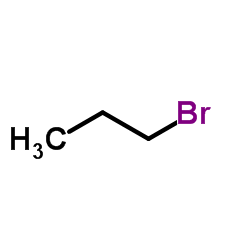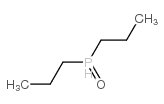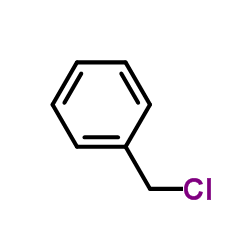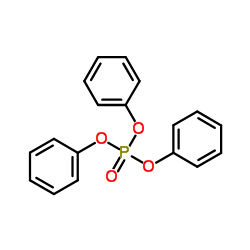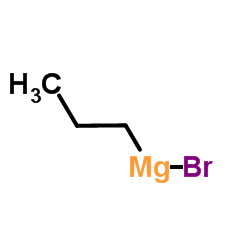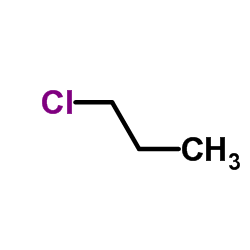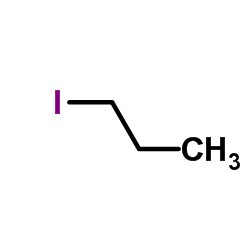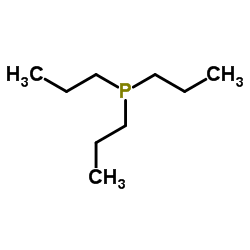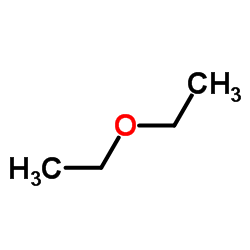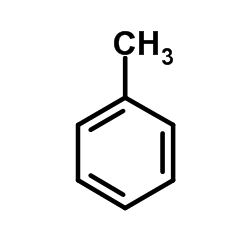1496-94-2
| Name | 1-dipropylphosphorylpropane |
|---|---|
| Synonyms |
tri-n-propyl phosphine oxide
Phosphine oxide,tripropyl tripropylphosphane oxide tripropyl-phosphine oxide tripropylphosphinoxide |
| Density | 0.875 g/cm3 |
|---|---|
| Boiling Point | 293.6ºC at 760 mmHg |
| Melting Point | 39ºC |
| Molecular Formula | C9H21OP |
| Molecular Weight | 176.23600 |
| Flash Point | 131.3ºC |
| Exact Mass | 176.13300 |
| PSA | 26.88000 |
| LogP | 3.57950 |
| Vapour Pressure | 0.003mmHg at 25°C |
| Index of Refraction | 1.417 |
|
Section 1: Product Identification Chemical Name:Tri-n-propylphosphine oxide, min. 98% CAS Registry Number:1496-94-2 Formula:(n-C3H7)3PO EINECS Number:none Chemical Family:organophosphorus compound Synonym:Tri-n-propylphosphine oxide
Section 2: Composition and Information on Ingredients IngredientCAS NumberPercentACGIH (TWA)OSHA (PEL) Title Compound1496-94-2100%no datano data Section 3: Hazards Identification Harmful in contact with skin and if swallowed. The material is irritating to skin, eyes, and mucous membranes. Emergency Overview: Primary Routes of Exposure:Ingestion, eyes, inhalation Eye Contact:Causes moderate irritation of the eyes Skin Contact:Causes moderate irritation of the skin. Harmful in contact with skin. Inhalation:The dust is irritating to the nose, mucous membranes and respiratory tract. Ingestion:Harmful if swallowed. May cause vomiting and diarrhea. Acute Health Affects:Harmful in contact with skin and if swallowed. Irritating to skin, eyes and respiratory tract. Chronic Health Affects:No information available on long-term chronic effects. NTP:No IARC:No OSHA:No SECTION 4: First Aid Measures Immediately flush the eyes with copious amounts of water for at least 10-15 minutes. A victim may need Eye Exposure: assistance in keeping their eye lids open. Get immediate medical attention. Wash the affected area with water. Remove contaminated clothes if necessary. Seek medical assistance if Skin Exposure: irritation persists. Remove the victim to fresh air. Closely monitor the victim for signs of respiratory problems, such as difficulty Inhalation: in breathing, coughing, wheezing, or pain. In such cases seek immediate medical assistance. Seek medical attention immediately. Keep the victim calm. Give the victim water (only if conscious). Induce Ingestion: vomiting only if directed by medical personnel. SECTION 5: Fire Fighting Measures Flash Point:not applicable Autoignition Temperature:no data Explosion Limits:no data Extinguishing Medium:carbon dioxide, dry powder or foam If involved in a fire, fire fighters should be equipped with a NIOSH approved positive pressure self-contained Special Fire Fighting Procedures: breathing apparatus and full protective clothing. Hazardous Combustion andIn a fire may emit toxic organic fumes, carbon monoxide, carbon dioxide, and phosphorous pentoxide. Decomposion Products: Unusual Fire or Explosion Hazards: No unusual fire or explosion hazards. SECTION 6: Accidental Release Measures Spill and Leak Procedures:Small spills can be mixed with vermiculite or sodium carbonate and swept up. SECTION 7: Handling and Storage Handling and Storage:Store in a tightly sealed container. Keep away from heat and direct sunlight. SECTION 8: Exposure Controls and Personal Protection Eye Protection:Always wear approved safety glasses when handling a chemical substance in the laboratory. Skin Protection:Wear protective clothing and gloves. Consult with glove manufacturer to determine the proper type of glove. Ventilation:Material may form a fine dust. If possible, handle the material in an efficient fume hood. If ventilation is not available a respirator should be worn. The use of respirators requires a Respirator Respirator: Protection Program to be in compliance with 29 CFR 1910.134. Ventilation:Material may form a fine dust. If possible, handle the material in an efficient fume hood. Additional Protection:No additional protection required. SECTION 9: Physical and Chemical Properties Color and Form:white xtl. Molecular Weight:176.24 Melting Point:39° Boiling Point:280-282°C Vapor Pressure:no data Specific Gravity:no data Odor:sweetish odor Solubility in Water:slightly soluble SECTION 10: Stability and Reactivity Stability:moisture sensitive Hazardous Polymerization:no hazardous polymerization Conditions to Avoid:contact with strong oxidizing agents Incompatibility:oxidizing agents and halogens Decomposition Products:carbon dioxide, carbon monoxide, organic fumes, and phosphorus oxides. SECTION 11: Toxicological Information Administration onto the skin (rabbit); Standard Draize test: 10 uL/24H. Adminstration into the eye (rabbit); RTECS Data:Standard Draize test: 5 uL. Oral (rat); LD50: 1410 mg/kg. Oral (mouse) LD50: 1360 mg/kg. Administration onto the skin (rabbit); LD50: 1130 mg/kg. Oral (rat); TDLo: 9300 mg/kg/30D-I. Carcinogenic Effects:No data available Mutagenic Effects:No data available Tetratogenic Effects:No data available SECTION 12: Ecological Information Ecological Information:No information available SECTION 13: Disposal Considerations Disposal:Dispose of according to federal, state, and local regulations. SECTION 14: Transportation Shipping Name (CFR):Non-hazardous Hazard Class (CFR):NA Additional Hazard Class (CFR):NA Packaging Group (CFR):NA UN ID Number (CFR):NA Shipping Name (IATA):Non-hazardous Hazard Class (IATA):NA Additional Hazard Class (IATA):NA Packaging Group (IATA):NA UN ID Number (IATA):NA SECTION 15: Regulatory Information TSCA:Listed in the TSCA inventory. SARA (Title 313):Title compound not listed. Second Ingredient:none SECTION 16 - ADDITIONAL INFORMATION N/A |
CHEMICAL IDENTIFICATION
HEALTH HAZARD DATAACUTE TOXICITY DATA
|
| HS Code | 2931900090 |
|---|
|
~69% 
1496-94-2 |
| Literature: Gusarova, N. K.; Malysheva, S. F.; Rakhmatulina, T. N.; Dmitriev, V. I.; Shaikhudinova, S. I.; et al. J. Gen. Chem. USSR (Engl. Transl.), 1990 , vol. 60, # 4.1 p. 828 - 832,725 - 729 |
|
~0% 
1496-94-2 |
| Literature: Malysheva, S. F.; Garashchenko, Z. M.; Arbuzova, S. N.; Nikitin, M. V.; Gusarova, N. K.; Trofimov, B. A. Russian Journal of General Chemistry, 1997 , vol. 67, # 11 p. 1794 - 1795 Zhurnal Obshchei Khimii, 1997 , vol. 67, # 11 p. 1905 - 1906 |
|
~0% 
1496-94-2
Detail
|
| Literature: Gusarova; Shaikhudinova; Reutskaya; Ivanova; Tatarinova; Trofimov Russian Chemical Bulletin, 2000 , vol. 49, # 7 p. 1320 - 1320 |
|
~% 
1496-94-2 |
| Literature: Gilman; Vernon Journal of the American Chemical Society, 1926 , vol. 48, p. 1066 |
|
~% 
1496-94-2 |
| Literature: Trofimov, B. A.; Gusarova, N. K.; Malysheva, S. F.; Dmitriev, V. I.; Rakhmatulina, T. N.; Voronkov, M. G. Phosphorus, Sulfur and Silicon and the Related Elements, 1990 , vol. 51/52, p. 713 |
|
~% 
1496-94-2 |
| Literature: Trofimov, B. A.; Gusarova, N. K.; Malysheva, S. F.; Dmitriev, V. I.; Rakhmatulina, T. N.; Voronkov, M. G. Phosphorus, Sulfur and Silicon and the Related Elements, 1990 , vol. 51/52, p. 713 |
|
~% 
1496-94-2 |
| Literature: Fukuzumi, Shunichi; Shimoosako, Kanji; Suenobu, Tomoyoshi; Watanabe, Yoshihito Journal of the American Chemical Society, 2003 , vol. 125, # 30 p. 9074 - 9082 |
|
~% 
1496-94-2 |
| Literature: Pickard; Kenyon Journal of the Chemical Society, 1906 , vol. 89, p. 264 |
|
~%
Detail
|
| Literature: Gilman; Vernon Journal of the American Chemical Society, 1926 , vol. 48, p. 1066 |
| HS Code | 2931900090 |
|---|---|
| Summary | 2931900090. other organo-inorganic compounds. VAT:17.0%. Tax rebate rate:13.0%. Supervision conditions:AB(certificate of inspection for goods inward,certificate of inspection for goods outward). MFN tariff:6.5%. General tariff:30.0% |
